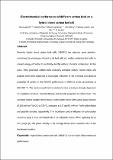Files in this item
Electrochemical performance of different carbon fuels on a hybrid direct carbon fuel cell
Item metadata
| dc.contributor.author | Li, Shuangbin | |
| dc.contributor.author | Pan, Wenzhi | |
| dc.contributor.author | Wang, Shaorong | |
| dc.contributor.author | Meng, Xie | |
| dc.contributor.author | Jiang, Cairong | |
| dc.contributor.author | Irvine, John T. S. | |
| dc.date.accessioned | 2018-06-12T23:32:45Z | |
| dc.date.available | 2018-06-12T23:32:45Z | |
| dc.date.issued | 2017-06-22 | |
| dc.identifier | 250268436 | |
| dc.identifier | 8f46605e-0956-4faa-8530-90e3c84de6e3 | |
| dc.identifier | 85020470223 | |
| dc.identifier | 000405251500026 | |
| dc.identifier.citation | Li , S , Pan , W , Wang , S , Meng , X , Jiang , C & Irvine , J T S 2017 , ' Electrochemical performance of different carbon fuels on a hybrid direct carbon fuel cell ' , International Journal of Hydrogen Energy , vol. 42 , no. 25 , pp. 16279-16287 . https://doi.org/10.1016/j.ijhydene.2017.05.150 | en |
| dc.identifier.issn | 0360-3199 | |
| dc.identifier.other | RIS: urn:32DB245CAFF3108E6951B696A96269CC | |
| dc.identifier.other | ORCID: /0000-0002-8394-3359/work/68280567 | |
| dc.identifier.uri | https://hdl.handle.net/10023/13980 | |
| dc.description | The authors acknowledge the financial support of the Royal Society of Edinburgh for a RSE BP Hutton Prize in Energy Innovation and EPSRC Platform grant, EP/K015540/1. | en |
| dc.description.abstract | In this work, three processed carbon fuels including activated carbon, carbon black and graphite have been employed to investigate influence of the chemical and physical properties of carbon on the HDCFC performance in different anode atmospheres at 650–800 °C. The results reveal that the electrochemical activity is strongly dependent on crystalline structure, thermal stability and textural properties of carbon fuels. The activated carbon samples demonstrate a better performance with a peak power density of 326 mW cm−2 in CO2 at 750 °C, compared to 147 and 59 mW cm−2 with carbon black and graphite samples, respectively. Compared to the ohmic resistance, the polarization resistance plays a more dominated role in the cell performance. When replacing N2 by CO2 purge gas, the power density is the strongly temperature dependent due to the Boudouard reaction. | |
| dc.format.extent | 9 | |
| dc.format.extent | 1145115 | |
| dc.language.iso | eng | |
| dc.relation.ispartof | International Journal of Hydrogen Energy | en |
| dc.subject | Hybrid direct carbon fuel cell (HDCFC) | en |
| dc.subject | Carbon fuels | en |
| dc.subject | Electrochemical performance | en |
| dc.subject | QD Chemistry | en |
| dc.subject | NDAS | en |
| dc.subject.lcc | QD | en |
| dc.title | Electrochemical performance of different carbon fuels on a hybrid direct carbon fuel cell | en |
| dc.type | Journal article | en |
| dc.contributor.sponsor | EPSRC | en |
| dc.contributor.institution | University of St Andrews. School of Chemistry | en |
| dc.contributor.institution | University of St Andrews. EaSTCHEM | en |
| dc.identifier.doi | 10.1016/j.ijhydene.2017.05.150 | |
| dc.description.status | Peer reviewed | en |
| dc.date.embargoedUntil | 2018-06-12 | |
| dc.identifier.grantnumber | EP/K015540/1 | en |
This item appears in the following Collection(s)
Items in the St Andrews Research Repository are protected by copyright, with all rights reserved, unless otherwise indicated.

